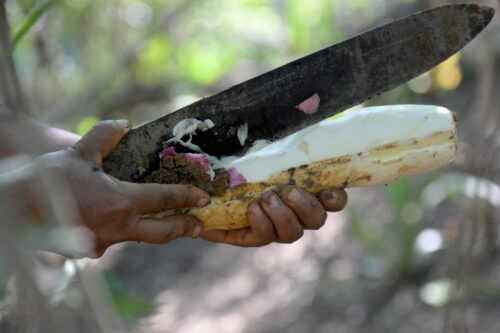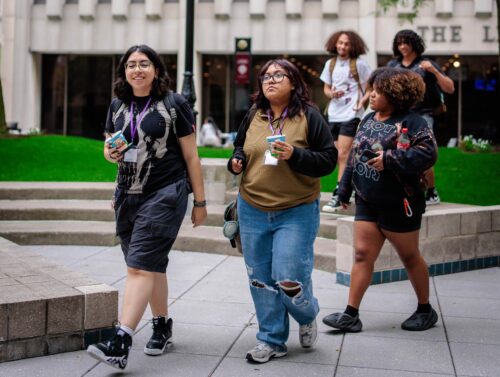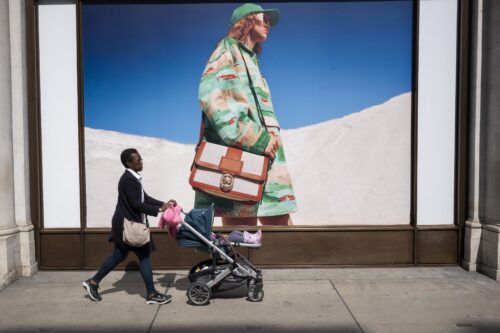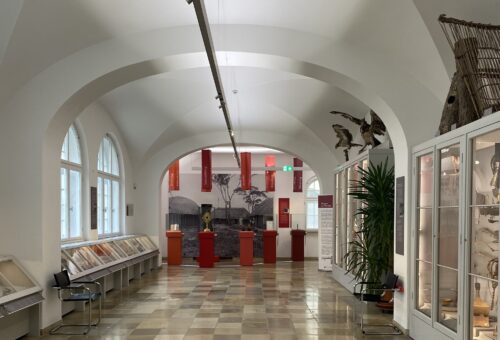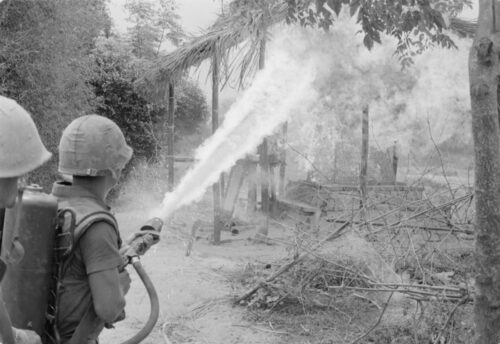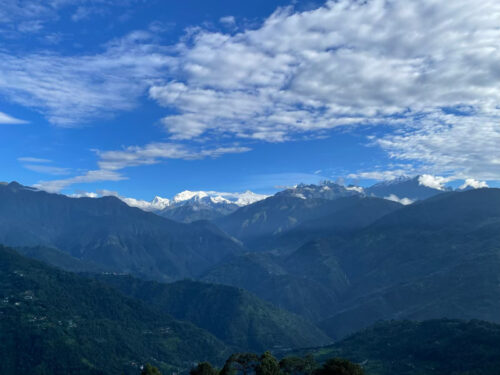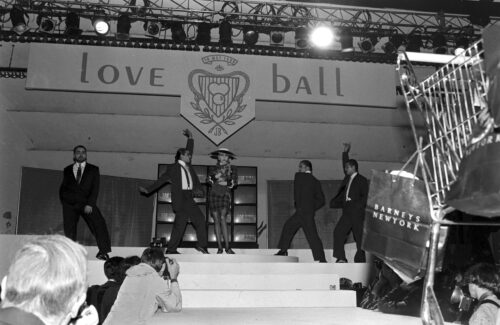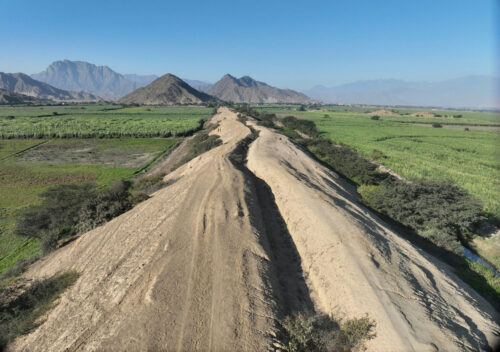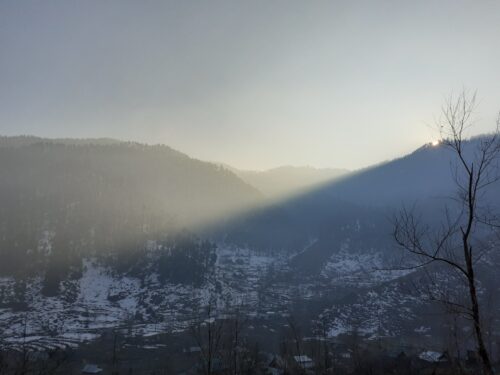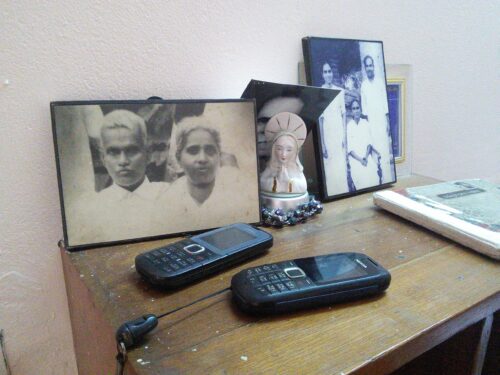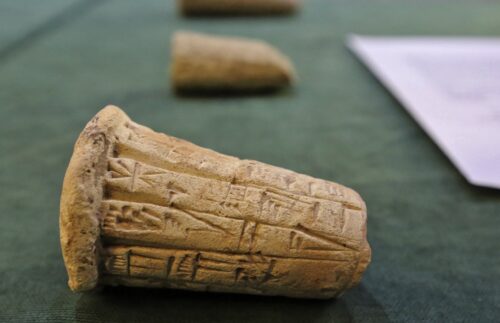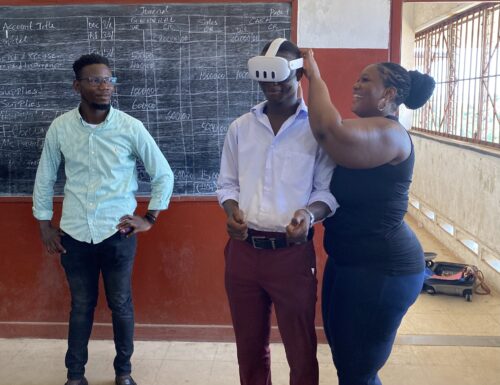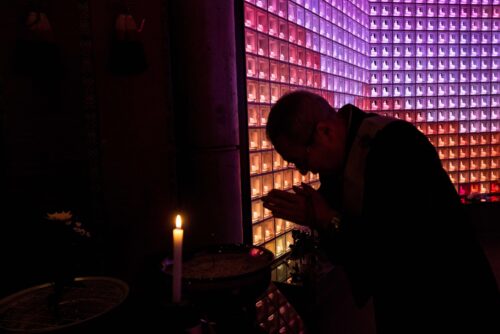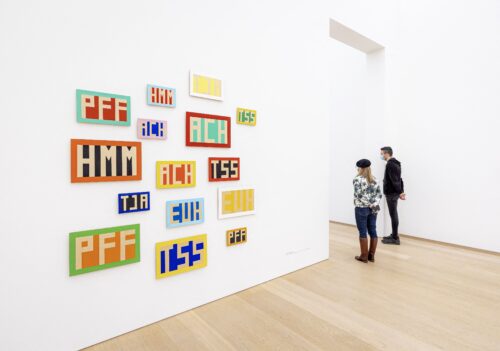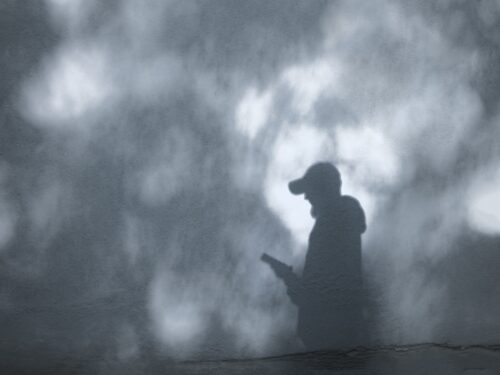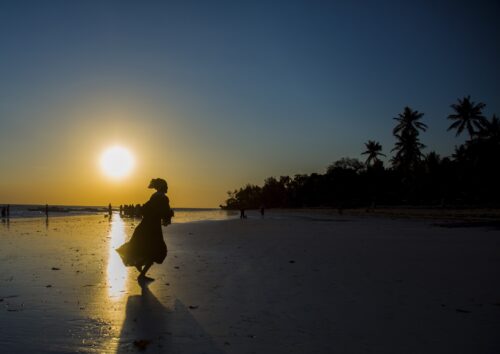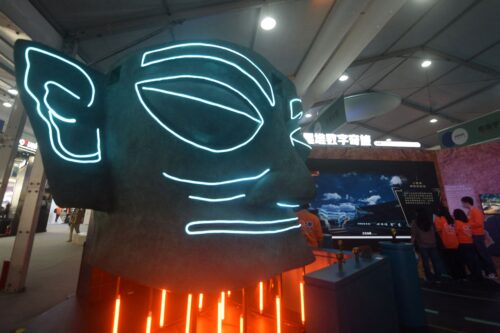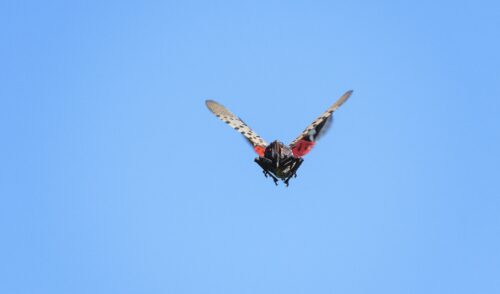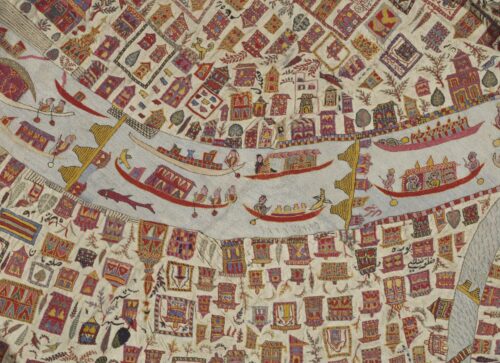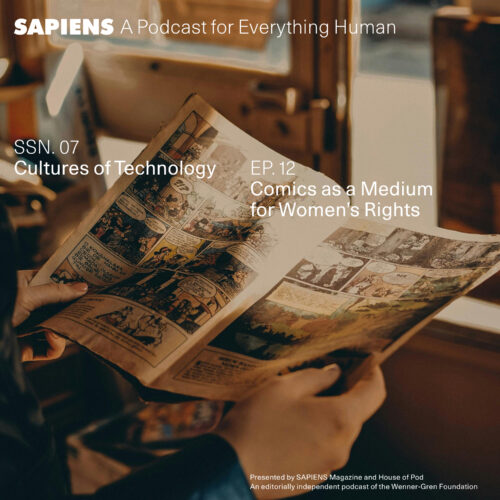As a form of popular culture, comics have provided humor, action, and entertainment to readers of all ages and across generations. But comics also intertwine art and humor to creatively make political statements, challenge media censorship, and address controversial issues of the times.
This podcast episode focuses on how comics can be tools for social action and transformation by highlighting the life history of the first woman Pakistani comic artist Nigar Nazar and her character Gogi, whom she created in the 1970s. Gogi comics shed light on important themes of education, health, rights, and other critical women’s issues in Pakistan and the broader Muslim world and how they are transforming over time.
Join cultural anthropologist Sana Malik and host Eshe Lewis as they talk about Gogi, the transgressive potential of comics and art, and how comics are relevant in Pakistan today amid new social movements and the social media boom.
Sana Malik is a cultural anthropologist who studies women’s political agency in urban Pakistan. She is a Ph.D. candidate at Emory University. Her research has been funded by the Wenner-Gren Foundation and the Social Science Research Council. Sana’s dissertation draws on the anthropology of rights and social movements, social generations studies, and feminist ethnography to explore how activists and ordinary women engage in movements for social justice and rights in urban Pakistan.
Check out these related resources:
SAPIENS: A Podcast for Everything Human is produced by House of Pod. The executive producers were Cat Jaffee and Chip Colwell. This season’s host was Eshe Lewis, who is the director of the SAPIENS Public Scholars Training Fellowship program. Dennis Funk was the audio editor and sound designer. Christine Weeber was the copy editor.
SAPIENS is an editorially independent magazine of the Wenner-Gren Foundation and the University of Chicago Press. SAPIENS: A Podcast for Everything Human is part of the American Anthropological Association Podcast Library.
This episode is part of the SAPIENS Public Scholars Training Fellowship program, which provides in-depth training for anthropologists in the craft of science communication and public scholarship, funded with the support of a three-year grant from the John Templeton Foundation.
Comics as a Medium for Women’s Rights
[introductory music]
Voice 1: What makes us human?
Voice 2: A very beautiful day.
Voice 3: Little termite farm.
Voice 4: Things that create wonder.
Voice 5: Social media.
Voice 6: Forced migration.
Voice 1: What makes us human?
Voice 7: Stone tools.
Voice 8: A hydropower dam.
Voice 9: Pintura indígena.
Voice 10: Earthquakes and volcanoes.
Voice 11: Coming in from Mars.
Voice 12: The first cyborg.
Voice 1: Let’s find out. SAPIENS: A Podcast for Everything Human.
Eshe Lewis: What can comics tell us about the world around us? What type of characters do we find ourselves relating to and why? In this conversation with Sana Malik, an American Pakistani anthropologist, we hear how visual art and comics have contributed to conversations about women’s rights and development in Pakistan.
Hi, Sana.
Sana Malik: Hi, Eshe.
Eshe: I am so glad that you’re speaking with me today.
Sana: Really excited to be here as well.
Eshe: Can you please introduce yourself?
Sana: Basically, I’m a Ph.D. candidate in cultural anthropology at Emory University, and my research interests are broadly in women’s rights and women’s movements across the Muslim world. I’m particularly interested in women from different generations, age groups, and cross sections of society and their role in bringing about social change and transformation. And to explore that, I work in my hometown in Pakistan, where I look at women’s participation in different types of public spheres or public spaces.
So that’s broadly what I’m interested in, and I’m excited to talk more about it today.
Eshe: What should people know about you? How would you describe yourself?
Sana: Gosh, this is always a hard one. But I’d say that I’m a Brown South Asian woman with a nose piercing, which is the most clichéd explanation of myself. But I’d also add that I’m a humorous person. I never lose the opportunity to make an obscure anthropology pun or joke.
So that’s the nerdy side of me. And that is also a hint as to why I’m looking at the topic for today, which is humor and comics and how those things are used as forms of dissent or political expression.
Eshe: OK. Well, you beat me to it, but can you tell me more about what we’re going to talk about today?
Sana: Absolutely. Today I’m hoping that we can chat about the role of art, in particular comics, in creating a space or a conversation for women to talk about women’s rights, issues of education, health, development, and other topics that aren’t always included in mainstream narratives, especially in countries like Pakistan. And I feel like it’s a really powerful and interesting tool that I see being used in women’s activist spaces as well. So I’m really interested in looking at what type of work it does and what it means for ordinary people when they view that type of media.
Eshe: Are comics common in Pakistan? I’m thinking about, in a North American context … I’m Canadian, and I grew up with comics in the newspaper, right? I loved the comics section. That was, I wouldn’t say, a major part of my life, but I loved Garfield. I loved Pearls Before Swine. Is this a common occurrence in Pakistan? Or is that what makes this particular issue of comics and the way that they’re used by women that much more special?
Sana: Yeah, I think that’s a really great question. I think that the context is a little important because we don’t have a very large English-speaking/reading population. So comics are a very urban, elite phenomenon [and are] mostly in the newspaper. So that’s what I saw growing up, as you mentioned, like Pearls Before Swine—hilarious—Calvin and Hobbes … There were all these Archie comics. I grew up with those. We used to go to old bookstores to get those and read them, but it’s not very mainstream, I would say.
And Gogi was exciting to me because we used to have a whole page in the Sunday papers with all these western American cartoons, and then Gogi just cropped up, and I was like, “Oh, there’s this Pakistani cool character, and she looks different, and she’s talking about different types of issues.” But it is definitely a niche readership and viewership because English newspapers only cater to a very small segment of society.
Comics and graphic design and art have actually had this reinvention in the last couple of years, I would say, maybe decade, where a lot of people are doing cool comics and graphic art as a form of protest, as a form of creativity—making posters. So I think there’s this interesting resurgence of the comic genre or the cartoon genre to make different types of statements, political or nonpolitical.
Eshe: OK. Well, this definitely sounds like a timely topic from the description you just offered. Can you tell me, specifically for you as an anthropologist, as someone who has an interest in comics, why this topic?
Sana: Because I work on different forms of women’s political agency and how they engage in the public sphere, I feel like there are limited opportunities for women in Pakistan. A lot of times, women have mobility issues. They have issues of access if they want to participate in different types of activities. And so what they can do is get on their tablet, get on their computers, get on their phones, get out a piece of paper and pen, and have a social media account. Accessibility is perhaps one thing that makes it exciting that anyone could participate in this. I feel like art, especially the medium of drawing, can offer this opportunity to participate without having to face all those barriers of mobility and accessibility.
Eshe: Can you just tell me, really briefly perhaps, why the Women’s March is controversial in Pakistan? I’m asking especially because when we’re talking about feminist issues, the Women’s March is maybe controversial for some people in North America, but that may not be for the same reasons that exist in Pakistan. Or maybe they are?
Sana: The Women’s March, or the Aurat March in Pakistan—and that just means “women”—is basically International Women’s Day. And it was started after the Women’s March happened in the U.S. after Trump got elected. So there was this kind of international connection between these marches happening, and it’s a controversial event in Pakistan. And because of that, the art is also controversial—the messaging, the visuals. They’re all a topic of conversation. And a lot of people bring placards and other types of protest art.
And I think that’s what piqued my interest in the topic as well because you had these illustrations, a lot of poster art, a lot of really cool designs and graphics coming out of it. And although that’s different to the type of comics that we were reading in the newspapers and the ones that we’ll be talking about today, the Women’s March created a space for the exploration of this type of genre in a different way, with graphic design and comics and cartoons and stuff like that. And it also allows me, in my own research, to think about how different types of people react to this content.
Eshe: When you were talking earlier about marches, for example, and you see these placards, and there’s this array of print culture, why comics in particular? What is it about comics that you think is particularly interesting?
Sana: I do some work on, as you said, visual and print culture. But I also thought that it was interesting to think about who is making them and who is producing them. So a lot of the people doing it are young folks. But what was going on when there was no social media? It was harder to get involved in these types of things. There isn’t really any formal training available to get into the craft, so that was one thing. But visuals are so powerful. Oftentimes there are language barriers. There are barriers of reading. Pakistan is a multilinguistic, multiethnic society, and not everyone has the same skill of being able to read or understand context.
Even if I had to read a provincial language, like a joke, in Sindhi, or some other language, I might not get the nuance and context of it. And so I feel like the “visual” does have that really interesting power to give a narrative but also keep it open to interpretation. So you can bridge the barrier between having that competency in language and reading.
Eshe: I’m really interested to know about Gogi cartoons. I know that’s a cartoon that has influenced you and your work, and I’m wondering if you can just start off by telling me who [the character] Gogi is.
Sana: Yeah. Gogi is so interesting to me because, first of all, she was this Pakistani character in a sea of other cartoons that I would see in the Sunday newspaper, for instance. She was wearing a shalwar kameez, which is a Pakistani dress. It was polka-dotted. So it was a cool, edgy outfit. She had short, cropped hair, and that was, again, something that’s not very common among women, especially in the ’70s and ’80s. I mean, long hair is just generally considered to be a South Asian standard of beauty. She’s sassy. She talks about important issues, like sexual harassment, marriage, gender roles.
I got interested because I’m like, “Who is she? Who is she representing? Is she a feminist? Is she an elite? Is she urban? Is she married? Who does she speak to and who does she speak for? Do I see myself in Gogi?” I became a Pakistani auntie, basically. You know, people want to know everything about you … and that coupled with her ironic sense of humor, kind of dry, tongue-in-cheek jokes.
Gogi [the comic] is the creation of the first female Pakistani comic artist, Nigar Nazar, who started drawing cartoons in the 1970s in Pakistan. I was really fascinated by her, so I had the opportunity to sit down with Nigar Nazar, who is based in Islamabad, and we chatted about her experiences as a self-taught comic artist and the impact her work has had on women’s issues in Pakistan. So here are some of her thoughts on that:
Nigar Nazar: Gogi. She’s a young woman, educated, modern, and misunderstood. And she is confident. And she knows her mind. And she’s a determined young woman who wants to do something for nation building, to bring about a change. So, yeah, you could say she imbibes my thoughts. She’s like an autobiographical character.
Gogi is elite. She is a feminist but not a hard-liner. She is educated. Yes. She is urban. Yes. Married/single? I keep my audiences guessing. She has ambition. She is determined. And she’s funny. She does things that I would have liked to do, like riding a bike, taking risks, traveling by public transport, things like that. I believe that you can say things, make comments, with humor because that works. It has a better effect on the person when they have a laugh at your creative work.
Eshe: What else do we know about Nazar that tells us more about her cartoons?
Sana: So in our conversations, she talks a lot about how her life is very checkered. It’s very start and stop. She started off in the ’70s drawing Gogi, and then Gogi traveled with her across the world because she was married to a diplomat. She also jokes about how she’s probably traveled to more countries than her diplomat husband because of Gogi. So Gogi took her in all these different directions. And she says how her role as a diplomat’s wife, as a mother of three, as a daughter, and as a comic artist influenced the content of her cartoons.
Often she mentions that she would just observe people when she was posted in foreign countries: wives of diplomats, what they were talking about. And she would use that as content, like a critique but also a commentary of life. And she also uses this word begum, which is an Urdu term for these elite women who are ladies of leisure and who are served by the house help, and they’re driven around by chauffeurs.
So she experiences this whole range of roles that she occupies throughout her life. Over 35 years, she’s been making these cartoons, which is why I think there’s such an interesting diversity to Gogi: You see Gogi in the village, you see Gogi on a motorcycle, you see her buying a corn on the cob from the roadside and then also in a fancy setting. So let’s just hear it from Nazar. She has a really interesting story.
Ms. Nazar: I was drawing all the time. I love to draw. I was always doodling. And when I was doing my premedical [courses], and I was sitting in class listening to that boring lesson on physics and chemistry, and ugh, I was drawing on the sides of my book, in the spaces. So I just did it as second nature. I thought after doing my premedical [course] and going into the bachelor’s [degree] that I did not want to carry on with my premedical [studies].
I’m a passionate person as far as cartooning is concerned or storytelling or dramatics, such as puppet shows—things that create wonder in kids’ books and stories. And that fascinates me. And what I do professionally is that I tell stories, I guess. Drawing comic strips that are witty and humorous is a huge talent. Drawing something on a blank sheet of paper … you start with nothing, and you end up with an amazingly witty cartoon; I think that’s huge.
Eshe: So, Sana, can you describe an example of a Gogi comic that you like?
Sana: I’ll just narrate the comic as I read it. So Gogi rides on the back of a motorcycle, presumably an Uber bike, which is pretty common form of transportation in Pakistan. With her short, cropped hair fluttering in the wind in her signature polka-dotted shalwar kameez, she’s enveloped in a cloud of fumes emitting from the car next to her. The lady driver rolls down her car window and asks Gogi where she’s off to. In between coughs, Gogi replies, “the environment conference,” to which the lady replies, “Oh, me too.” And drives off in a cloud of smoke [laughs].
So I think this is really interesting because it showcases Nazar’s humor and also how Gogi is still keeping up with the issues of the times. She’s talking about climate change and how elite people talk about social causes but also often seem oblivious to their own participation in those crises. So, yeah, that’s perhaps one of the ones that stood out for me.
Eshe: That’s a very vivid picture that you’ve painted for us. And I like that because it feels like something that maybe an audience even beyond Pakistan can appreciate.
So now listening to you describe your favorite Gogi comic is making me wonder if, during your conversation with Nazar, she has a favorite Gogi comic. Does she? Does she not? What is it?
Sana: Yeah, absolutely she does. And she narrates it really well. It’s a topic on female childbirth in Pakistan and preferences for sons. So it’s a pretty heavy topic, and she does it in a really beautiful and humorous way. And this is her describing that cartoon in her own words:
Ms. Nazar: So Gogi and a friend are buying a corn on the cob from the vendor. So her friend says, “When my grandfather was born, they passed around cigars.” Next panel: “When my father was born, they passed around cakes.” Third panel: Gogi asks, “Nadia, when you were born [what happened]?” Fourth panel: “They passed out.” HA! HA! HA!
Eshe: We’ll hear more from Sana after the break.
[break with SAPIENS ad]
Eshe: You’ve hinted at this a little bit, but how is Gogi [the character] relevant today?
Sana: So Gogi has addressed issues that are very important and dear to women: women’s education, girls’ education, children’s health, hygiene, climate change—all of these things. I think that Gogi’s messaging is very contemporary. It’s really kept up with the times, even though we might not see Gogi in the newspaper as much anymore, we might not see her on social media as much as we see other types of art. Gogi was trying to address issues that we couldn’t talk about in the public space or public sphere as much as other types of topics.
It became an interesting forum through which you could talk about sexual harassment. But because it’s this cute cartoon with a polka-dotted shalwar kameez, she can talk about these controversial issues without stirring up too much drama or a backlash. So I think that those are some ways in which Gogi is still relevant today. She is versatile and speaks to a wide variety of women. She has an appeal. You have Gogi in the village. You have Gogi in the university. You have Gogi at the traffic lights. And that’s how she stays relevant. She fits into all these different types of women’s representations.
Eshe: I love this topic because I also think that anthropologists have picked up on this in so many different contexts where we see people use humor as a way to critique society, especially when there is a level of censorship. Whether it’s political or just social, people find ways to say what they want to say, and doing so under the guise of a joke is usually a really smart way of doing it, right? And so it’s a simple comic, but it’s offering this pushback, or maybe punching up in a way, that would not be acceptable if someone just came out and said that in a regular or public conversation. I think there’s a lot there. That sounds so cool.
How do you think Gogi resonates with girls and women in Pakistan now?
Sana: I’ll just go to this really beautiful anecdote that Nazar shared with me when we were chatting. She talks a little bit about how Gogi has evolved. So Gogi started as a comic strip in a newspaper, then Nazar diversified into more print media, into graphic novels, long-form visual texts, and things like that. And she recently came out with a graphic novel, which has had a really wonderful influence on young girls in Pakistan who don’t have access to education. And she tells me this story about Tahira, the girl who got a copy of the Gogi comic book.
Ms. Nazar: The one I did on girls’ education talked about a story of the girl who couldn’t go to school. She loved going to school and to learn and so on. But her parents decided that she couldn’t go anymore because there were other kids to go to school, and they couldn’t manage all the kids going to school at one time. So she couldn’t go to school.
But in my story, in the end, she does manage to learn and go to school. So when this book landed in the hands of a girl from a village who had a similar story where she could not go to school despite desiring to do so, it moved her to the extent that she got her parents to sit on each side [of her]. And they were not educated. They could not read. However, my comic book, as always, has more pictures and less written words, so they were following it quite intently. And Tahira was narrating the story from the book. And she read right through to the end. And do you know what the father said in the end? He said, “Tahira, from tomorrow, you will go to school.”
She wrote a letter to us at the studio, and she sent a picture of her dad, and she sent a picture of her mom’s ID card, and she said, “Your book has changed my life, and I am going back to school.”
Eshe: As an anthropologist, how do you see Gogi speaking to your own work? On women’s agency in Pakistan?
Sana: I remember we started off talking about the Women’s March and how there are forms of alienation. There are women who don’t relate to some of the messaging. But I feel like, as an anthropologist, I’m quite interested in thinking about how does Gogi bridge those different political views, those different views about how to be a woman in Pakistani society?
There is no one Pakistani woman, right? So how do housewives, mothers, neighbors, religious women see themselves in this character? How does Gogi speak to them? That’s what I like about Gogi. She has this very interesting, diverse appeal. And this is my own reading of Gogi, again as an anthropologist—I don’t know if Nazar would agree with me entirely or what her view would be about this—but I do think that Gogi is able to hold a special space in the middle of all of these different and divergent views of what it means to be a woman. And it respects and offers space for women to have agency in different types of ways, whether it’s in the house, on the street, on public transport. So that’s how I negotiate Gogi as a character in my work.
Eshe: At the beginning, you talked about comics as one example of print culture, but I assume it’s one of many forms of art in Pakistan in general. How do you see other forms of art in the country competing with Nazar’s work or complementing it? I’m wondering if there are any sort of intersections between this messaging and comics and other art that’s being created at this point in time.
Sana: I think there’s a temptation to be like, “Oh, well, the new is replacing the old” or something like that, but I like to think about it as complementary. So I think they all work together to do some important messaging. There’s Gogi, which is more traditional comic art from the newspapers. There are girls who are starting these e-zines and who are making really funny feminist art. I’ve spoken to quite a few of those artists during my research. Some are just doing really colorful posters, really bold.
So I think there’s a range of issues that people are tackling, which are perhaps more radical than Gogi. People are talking about bodily autonomy. They’re talking about sexuality. They’re talking about queerness. So there are all these other types of messaging that I think are happening through art, which are taking that original sensibility or messaging from a Gogi cartoon to something that’s more contemporary and perhaps resonating more with Gen Z and the younger generation.
And, of course, we’re in a world of social media. There are just more creative and dynamic ways to use the new technology and to be a little more edgy in the messaging as well. Gogi plays it a little safe in some way. But younger cartoonists and comic artists are perhaps a little bolder, a little more audacious.
Eshe: Well, it sounds like Gogi may have inspired a lot of what you’re seeing now, in terms of other generations picking up the torch and maybe pushing the needle, picking up from where Nigar Nazar is right now. And I really love this idea that you mentioned about the importance of comic art as a form of critique or dissent. I’m wondering what you think the future of comic art in that regard is in Pakistan and more broadly. Where does it go from here?
Sana: I feel like it’s a big question. Is print media going out of style? Are people not interested in reading the newspapers anymore? Everyone reads their news online. Personally, I like to stay optimistic and think that there will always be space for this type of craft, regardless of what type of changes come about in technology. But let’s have Nigar Nazar have the last word on it:
Ms. Nazar: The human brain is far superior, and AI would make it so mechanical. You learn through experience. You can learn draftsmanship from a school, but you can’t learn humor. That has to be in you. And the more you do it, the more you practice, the better you get at it. At this age, people normally retire. They say, “That’s it. Put up your pen and ink and drawing board. Relax. Enjoy life!” Well, I believe that creativity is not something you retire from. When you are creative, you are creative until after 70 plus, if you really enjoy it.
[music]
Eshe: This episode was hosted by me, Eshe Lewis, featuring reporting by Sana Malik. Sana is a Ph.D. candidate at Emory University in Atlanta, Georgia, and is currently based in Denver, Colorado. Thank you to Nigar Nazar of Gogi Studios for contributing to this episode.
SAPIENS is produced by House of Pod. Cat Jaffee and Dennis Funk are our producers and program teachers. Dennis is also our audio editor and sound designer. Christine Weeber is our copy editor. Our executive producers are Cat Jaffee and Chip Colwell. This episode is part of the SAPIENS Public Scholars Training Fellowship program, which provides in-depth training for anthropologists in the craft of science communication and public scholarship.
SAPIENS is an editorially independent podcast funded this season by the John Templeton Foundation with the support of the University of Chicago Press and the Wenner-Gren Foundation. SAPIENS is part of the American Anthropological Association Podcast Library. Please visit SAPIENS.org to check out the additional resources in the show notes and to see all our great stories about everything human. I’m Eshe Lewis. Thank you for listening.
